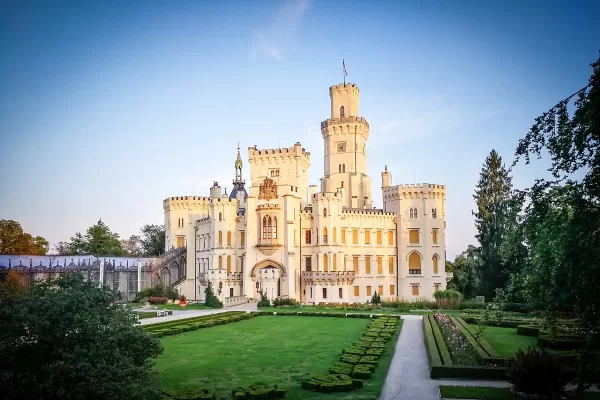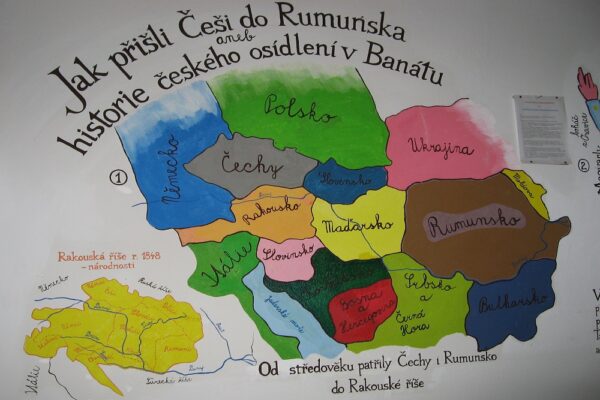Today we’re taking an armchair travelers trip to Mnichovo Hradiště (German: Münchengrätz), a town in the Central Bohemian Region in the Czech Republic. We’re going because at the same time I write this, my son Zachary is there with Petr, Adelka and Miley, enjoying a delicious Sunday meal and a visit to the château. Thanks to the miracle of the internet, I can even include their photos in this post.
The town was first mentioned in 1279 and contains a Renaissance castle which used to belong to the Wallenstein family. The Wallenstein Mnichovo Hradiště Château is one of the places forever associated with the famous military leader of the Thirty Years´ War, Albrecht von Wallenstein.
Come along…
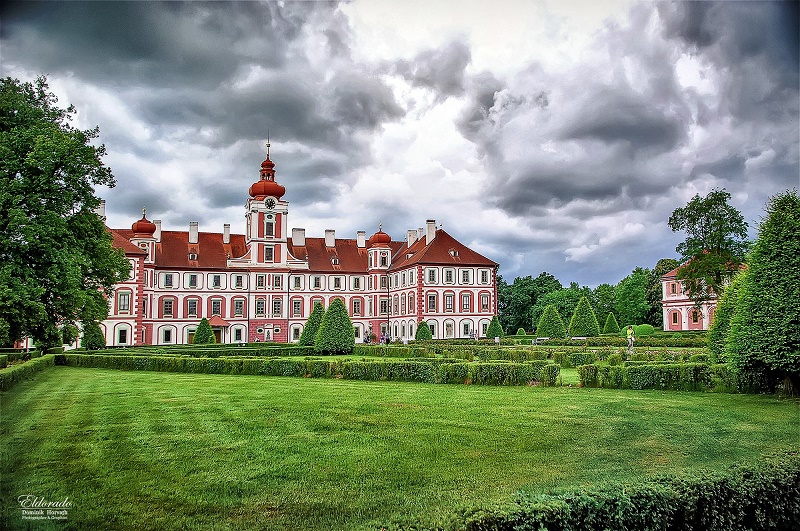
Photo: Dominik “El Dorado” Horvath.
The château has an intriguing history. It was built in the 17th century, during Renaissance times. The first owner, Václav Budovec of Budov joined forces with other nobles in a revolt against the emperor and was executed on Old Town Square in Prague in June of 1621.
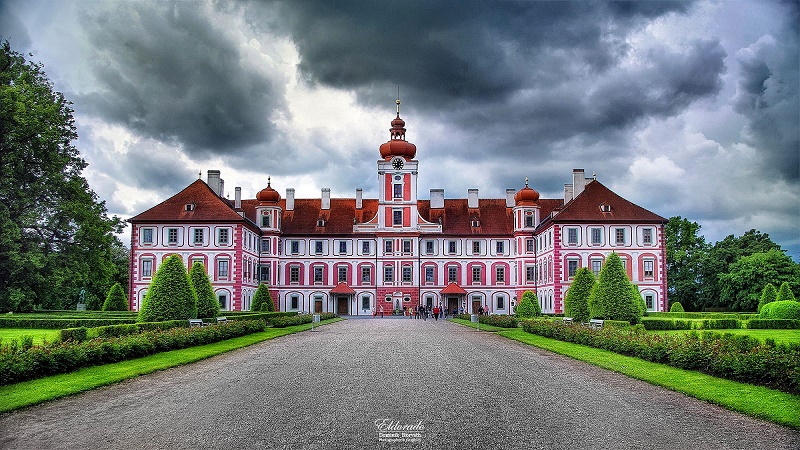
Photo: Dominik “El Dorado” Horvath.
In 1623, the chateau was confiscated and subsequently bought by Albrecht Eusebius of Waldstein. In 1675 Arnošt Josef of Waldstein purchased it and kept it until the middle of the 20th century.
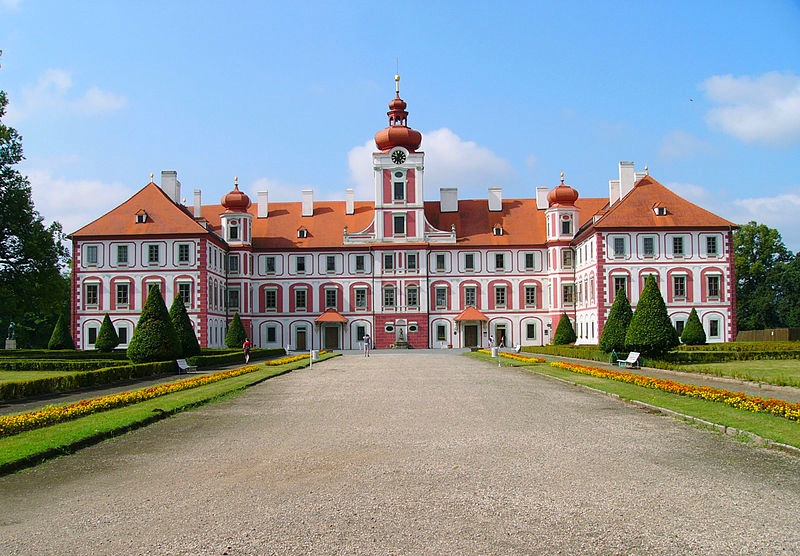
Photo: Lukáš Kalista.
The château was given a Baroque appearance in the early 1700s, although some rooms were given a Rococo makeover around 1750.
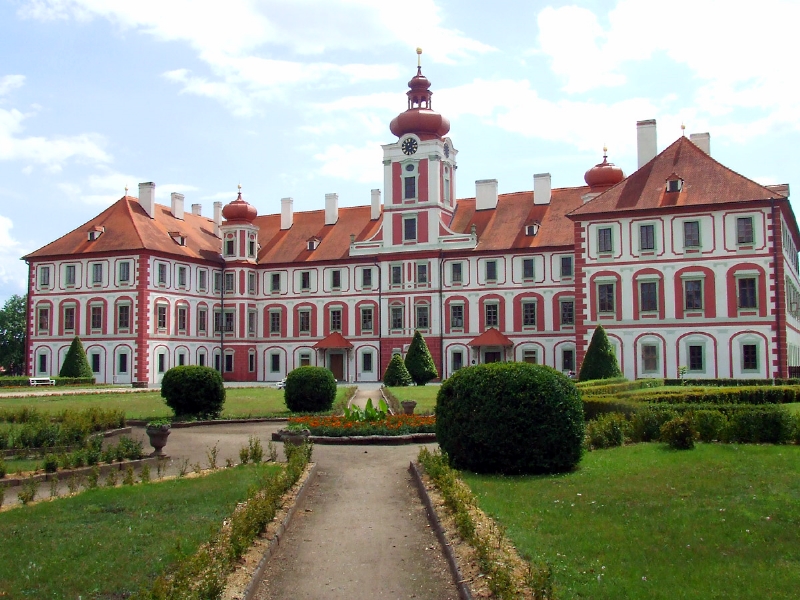
Photo: Flickr.
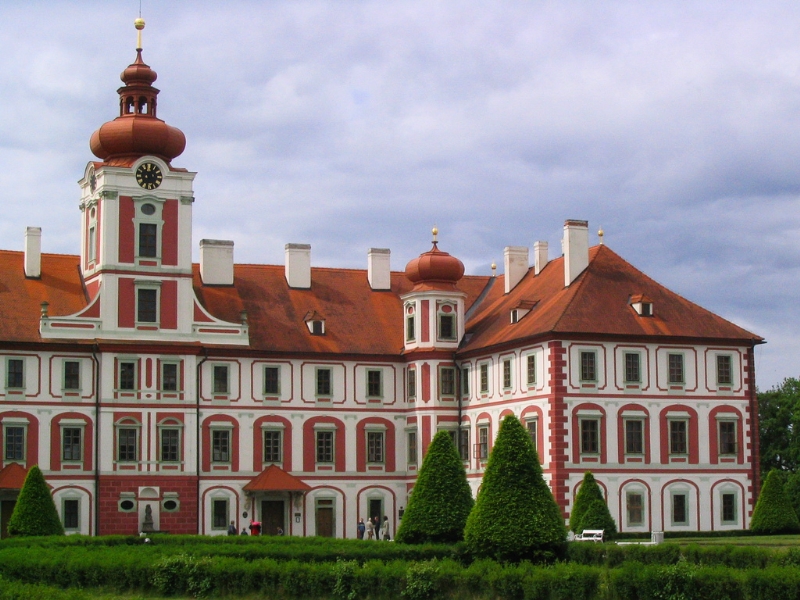
Photo: centipede on Flickr.
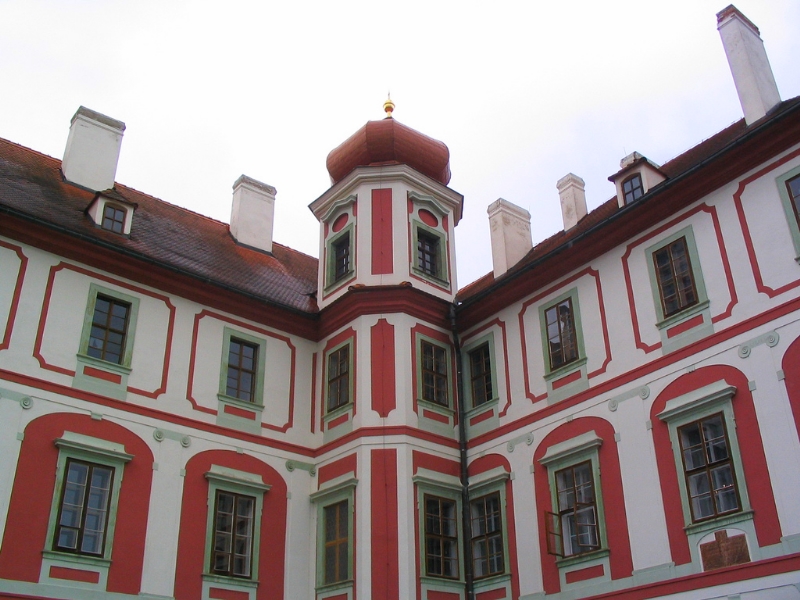
Photo: centipede on Flickr.
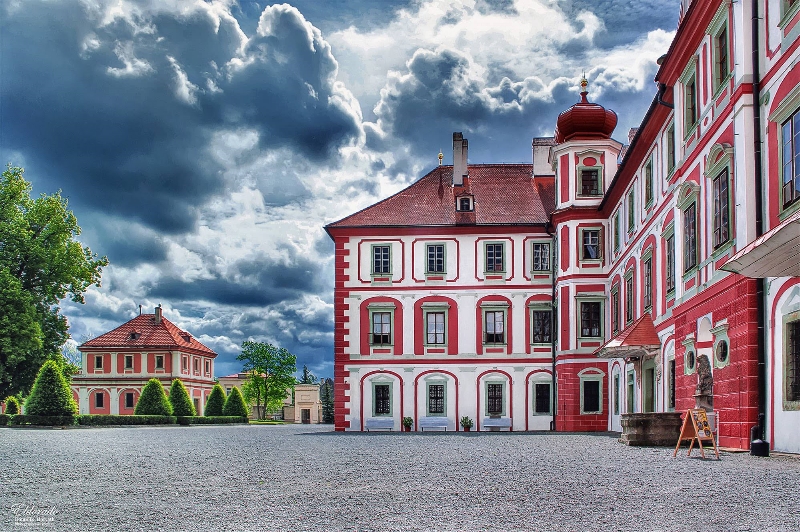
Photo: Dominik “El Dorado” Horvath.
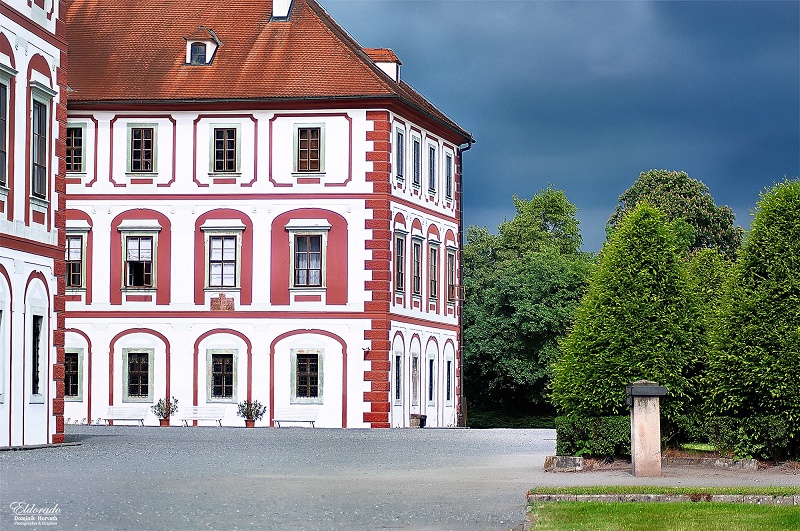
Photo: Dominik “El Dorado” Horvath.
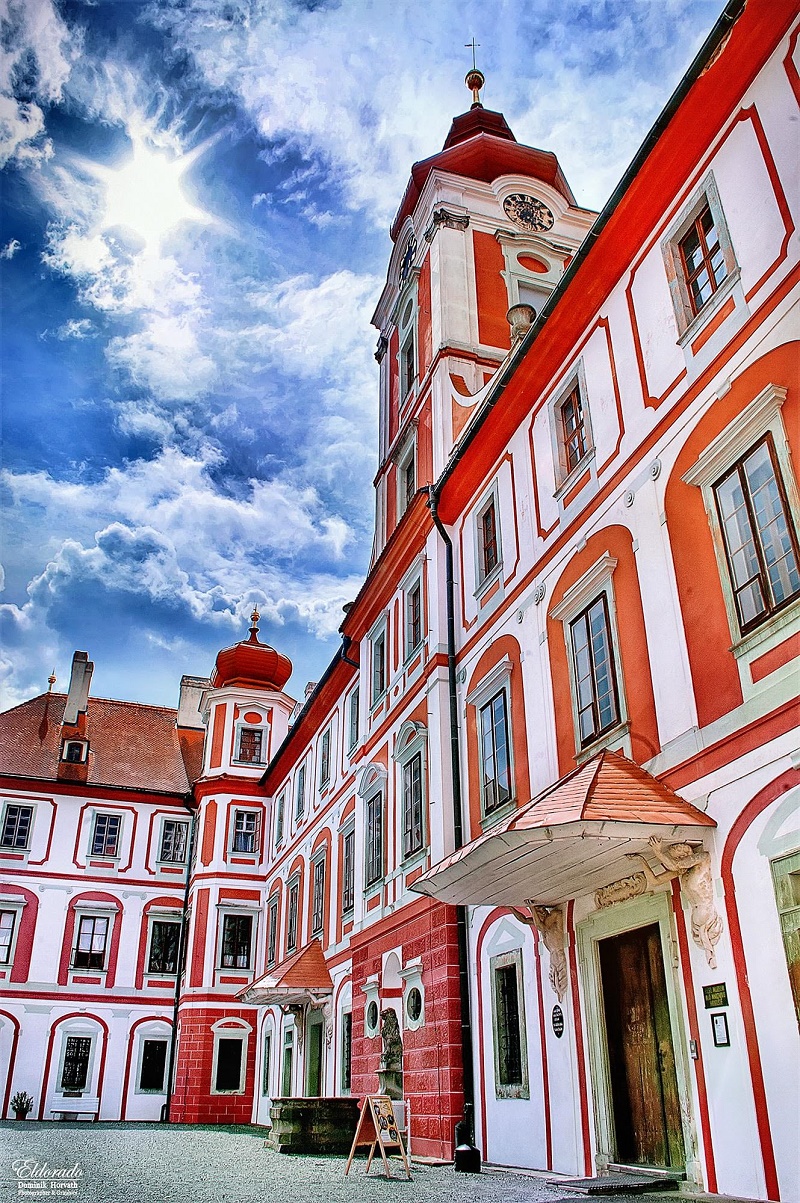
Photo: Dominik “El Dorado” Horvath.
On this particular Sunday, not too many people went out in the cold to visit the château ensuring that Zachary and Adelka could be silly and have fun!
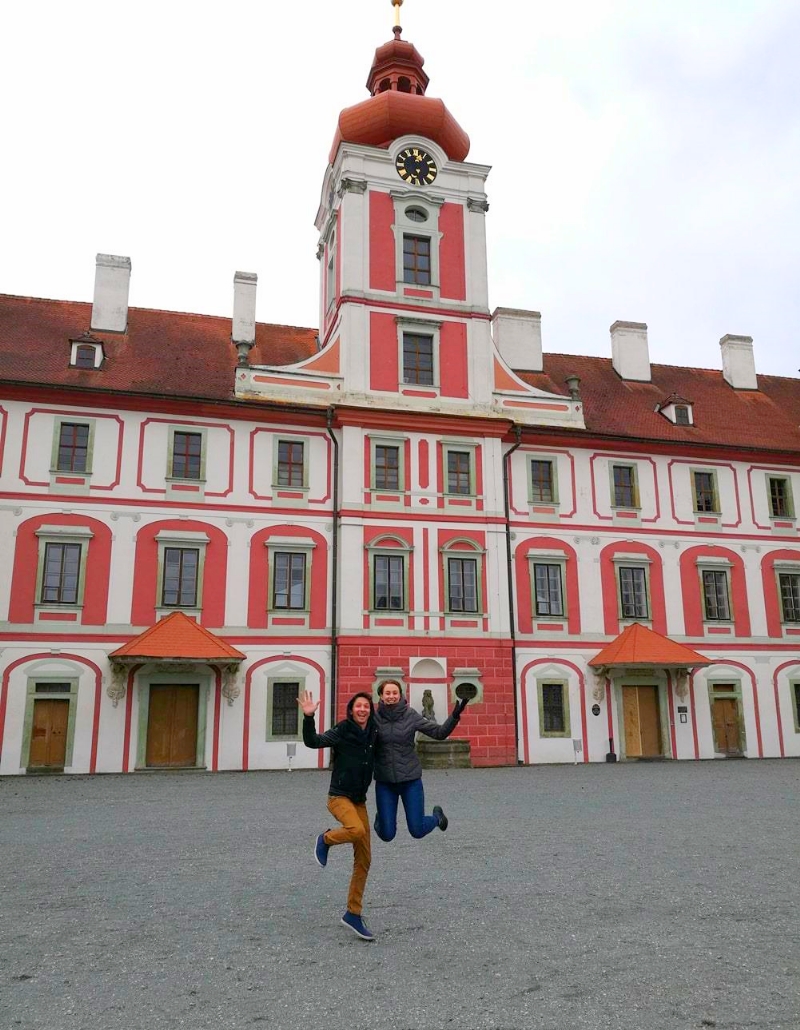
Zachary and Adelka Having some Sunday fun.
On the inside, the interiors are just as lovely as the exterior of this château. Our favorite is, of course, the library.
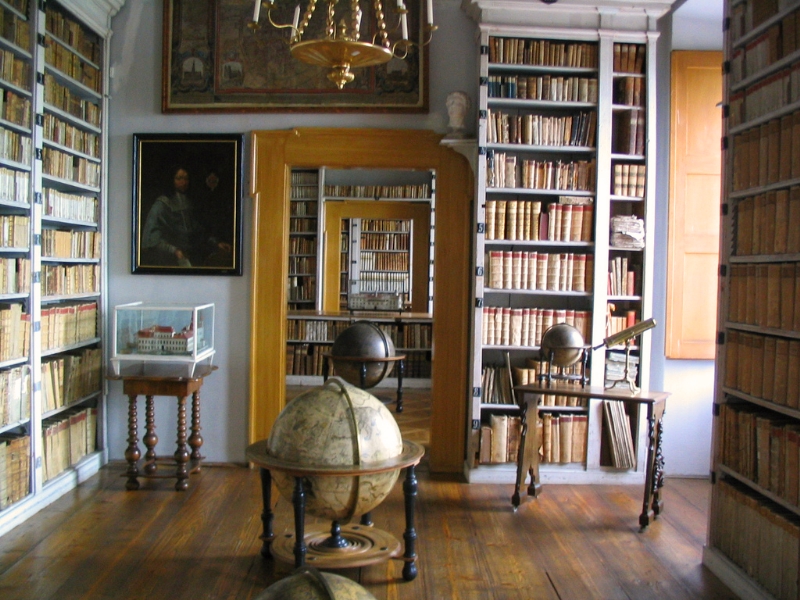
Photo: centipede on Flickr.

Of course, all rooms that are available for viewing are lovely.
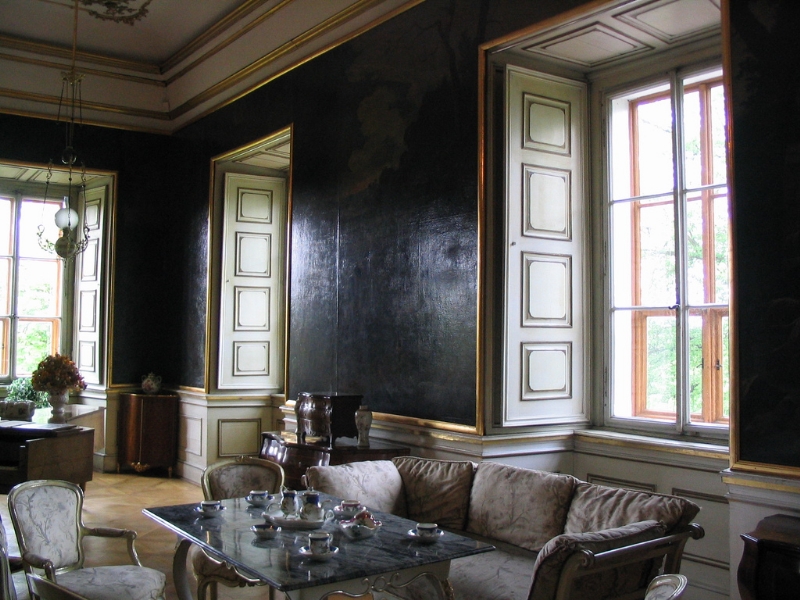
Photo: centipede on Flickr.
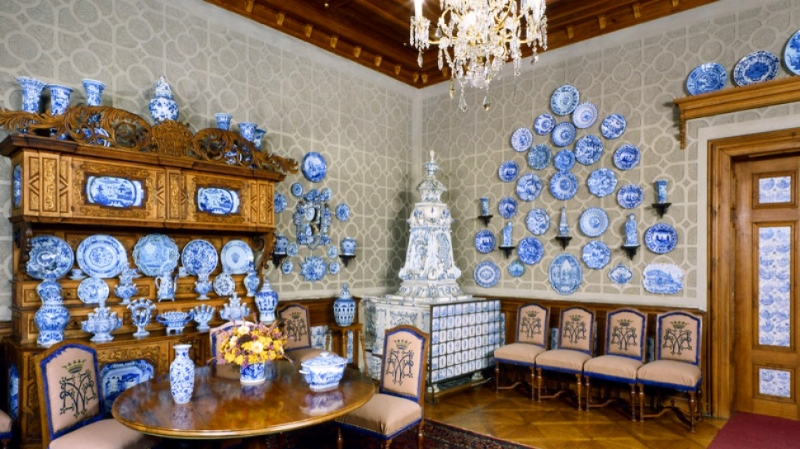
Photo: JouTrip.
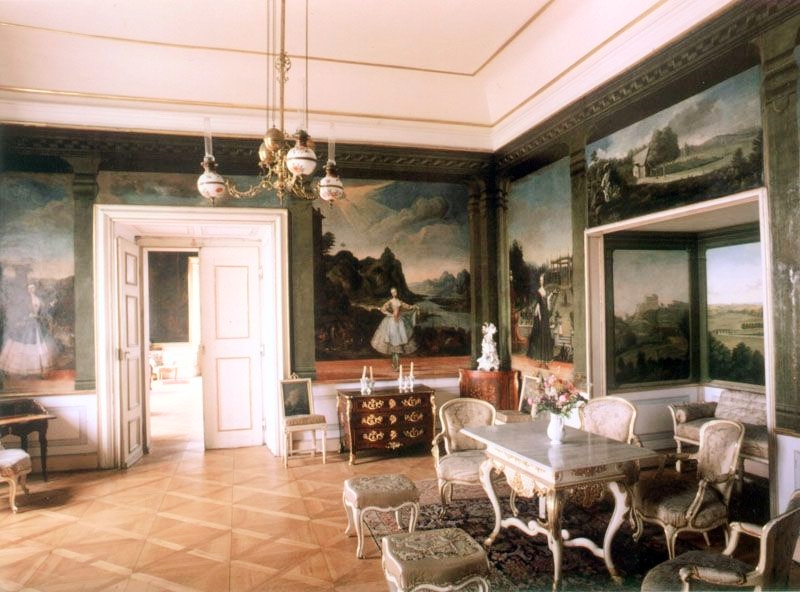

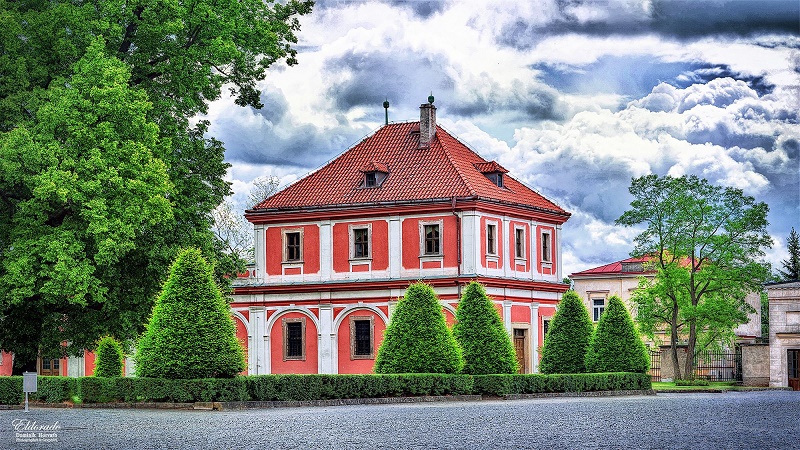
Photo: Dominik “El Dorado” Horvath.
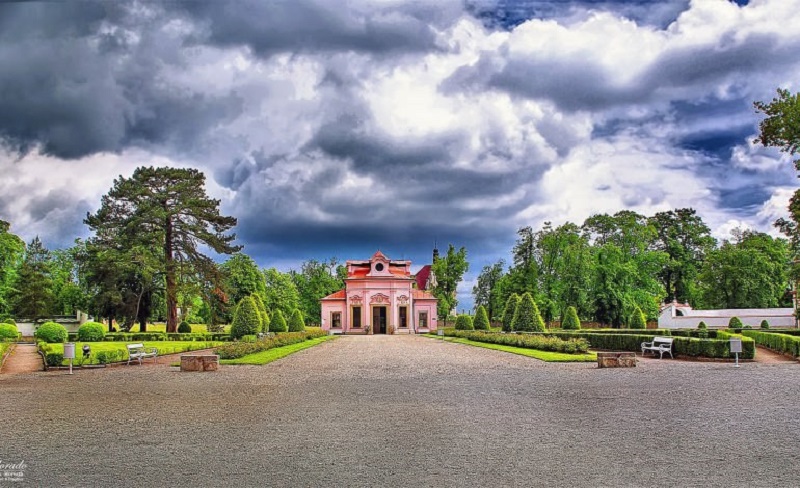
Photo: Dominik “El Dorado” Horvath.
Continuing to explore the grounds, Zachary and Petr take a moment to strike a pose.
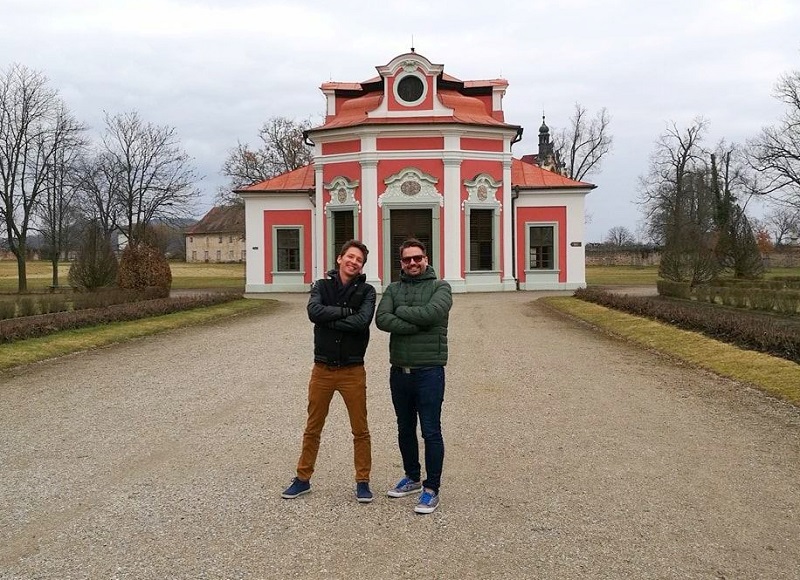
Zachary and Petr striking a pose.
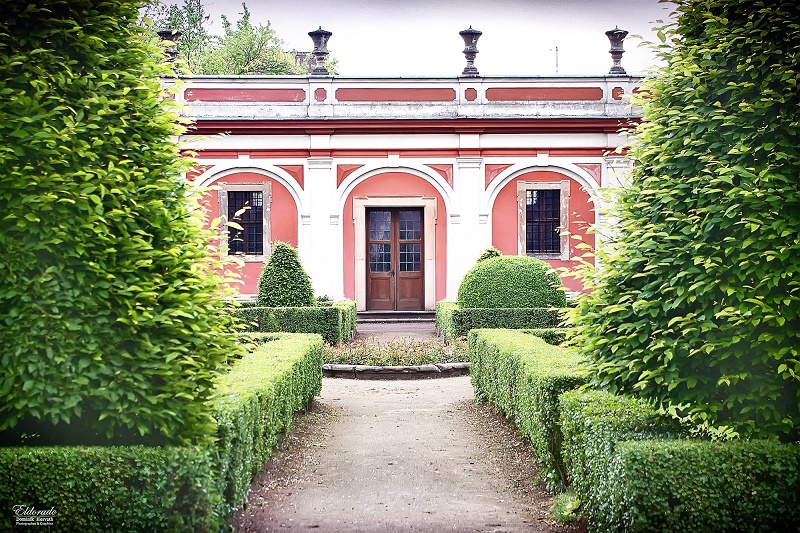
Photo: Dominik “El Dorado” Horvath.
Albrecht von Wallenstein
The Baroque look of the château came about over the years 1697–1703 at the time of Arnošt Josef of Valdštejn (Albrecht von Wallenstein).
Albrecht von Wallenstein (September 24, 1583 – February 25, 1634), was a Bohemian military leader and politician who offered his services, and an army of 30,000 to 100,000 men, during the Thirty Years’ War (1618–48), to the Holy Roman Emperor Ferdinand II. He became the supreme commander of the armies of the Habsburg Monarchy and a major figure of the Thirty Years’ War.
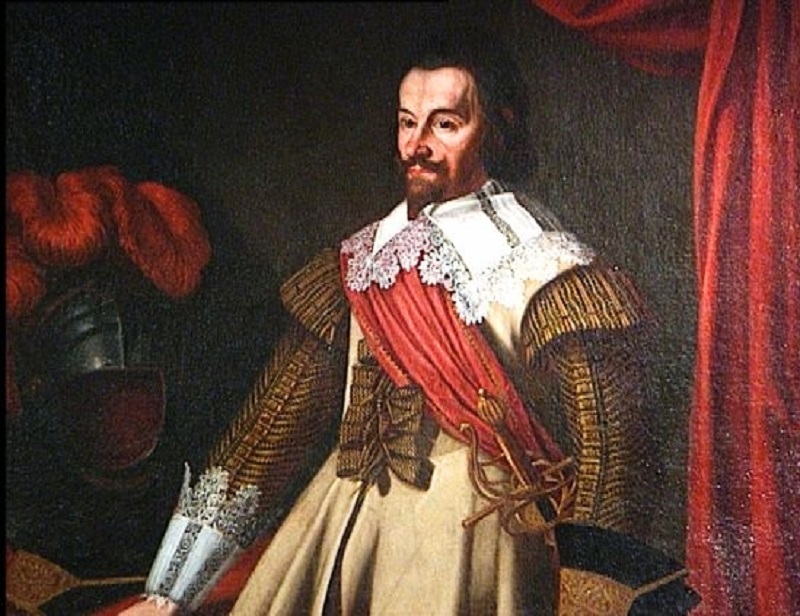
Wallenstein’s particular genius lay in recognizing a new way for funding war: instead of merely plundering enemies, he called for a new method of systematic “war taxes”. Even a city or a prince on the side of the Emperor had to pay taxes towards the war. He understood the enormous wastage of resources that resulted from tax exactions on princes and cities of defeated enemies only, and desired to replace this with a “balanced” system of taxation; wherein both sides bore the cost of a war. He was unable to fully realize this ambition; and in fact, his idea led to the random exploitation of whole populations on either side, until finally, almost fifteen years after his death, the war had become so expensive that the warring parties were forced to make peace.
His remains were moved from Jičín to the castle of Mnichovo Hradiště in 1723. He finally rests on the premises of Mnichovo Hradiště Château, in the Chapel of St. Ann at the Church of the Three Kings.
Chapel of St. Ann at the Church of the Three Kings
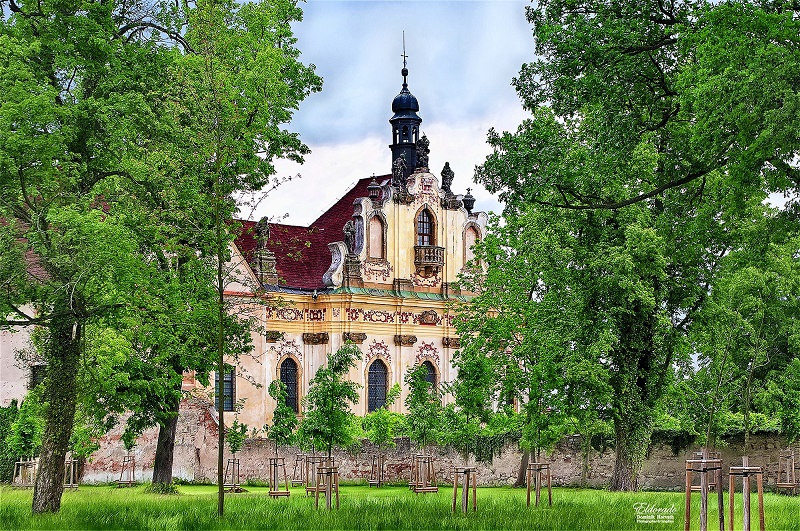
Photo: Dominik “El Dorado” Horvath.
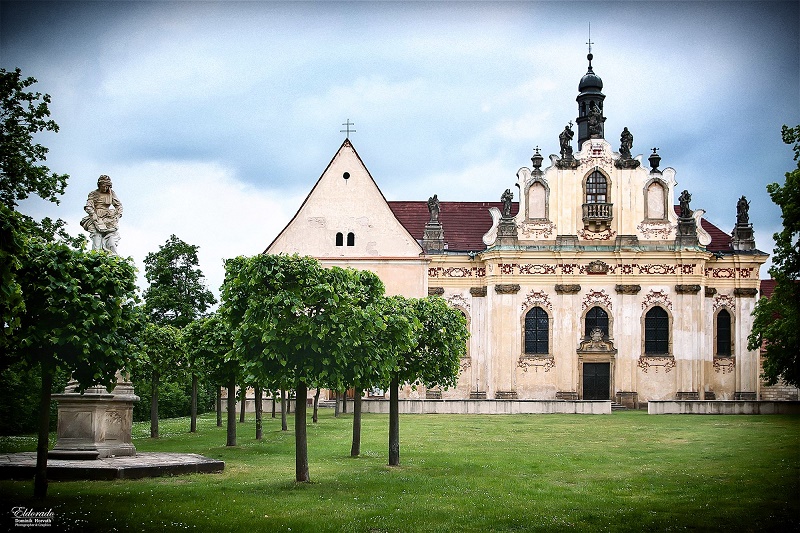
Photo: Dominik “El Dorado” Horvath.
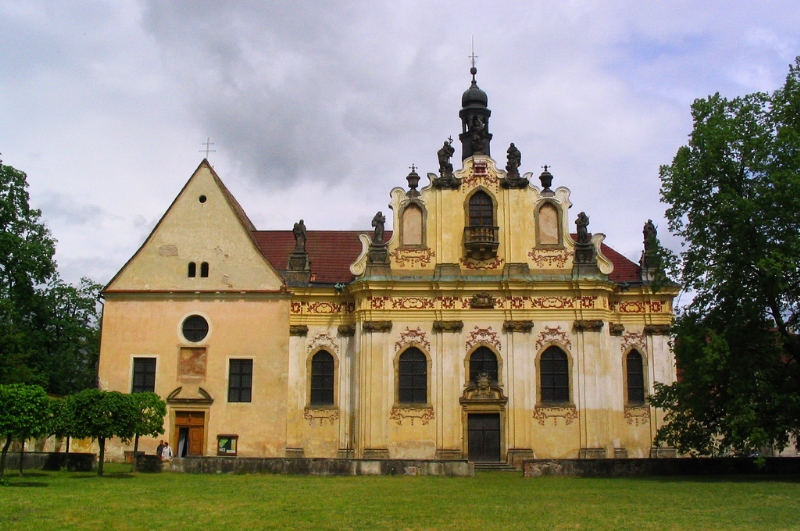
Photo: centipede on Flickr.
The grounds surrounding the château are lovely and filled with beautiful old trees.
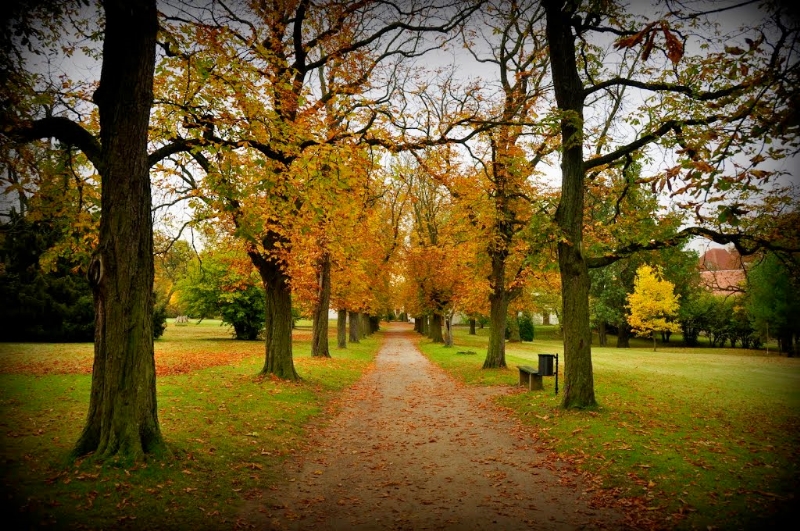
If you look closely, you can see my son Zachary, doing what he always loved most as a little boy, climbing trees and exploring old castles and châteaus.
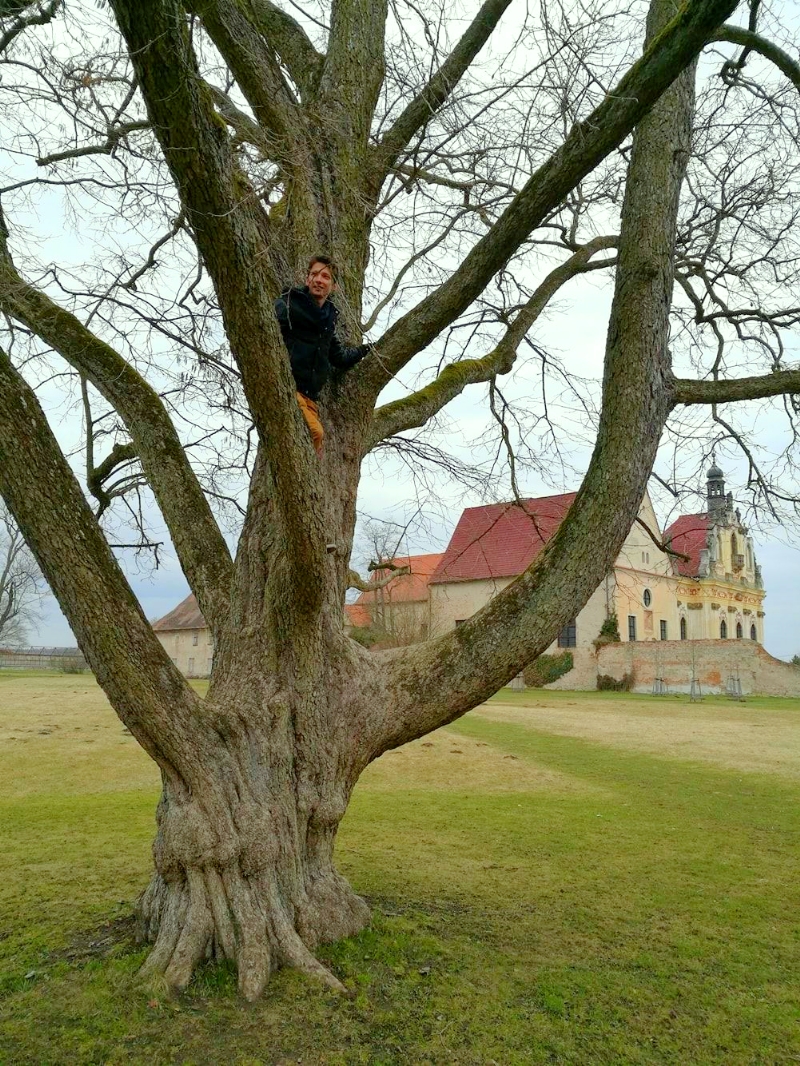
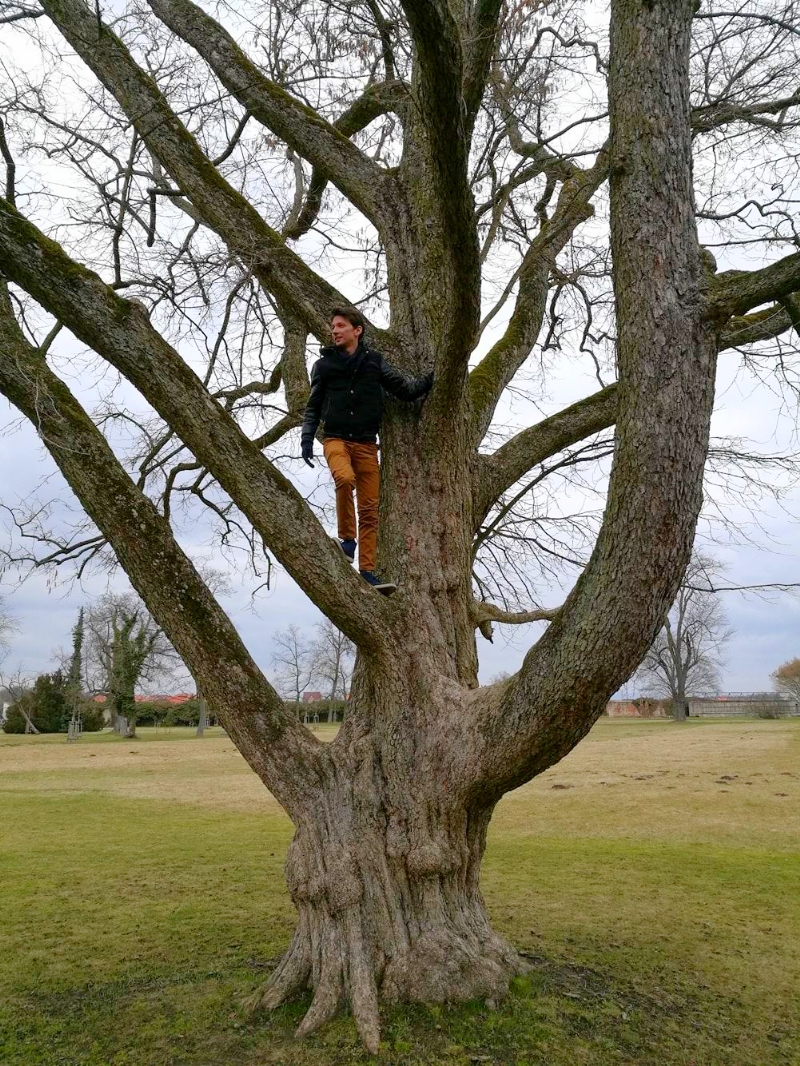
Let’s peek inside the church…
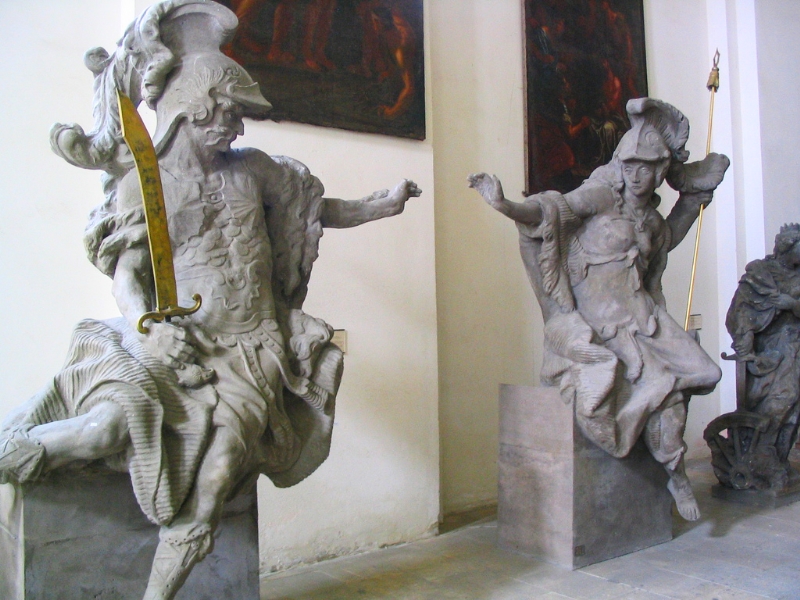
Photo: centipede on Flickr.
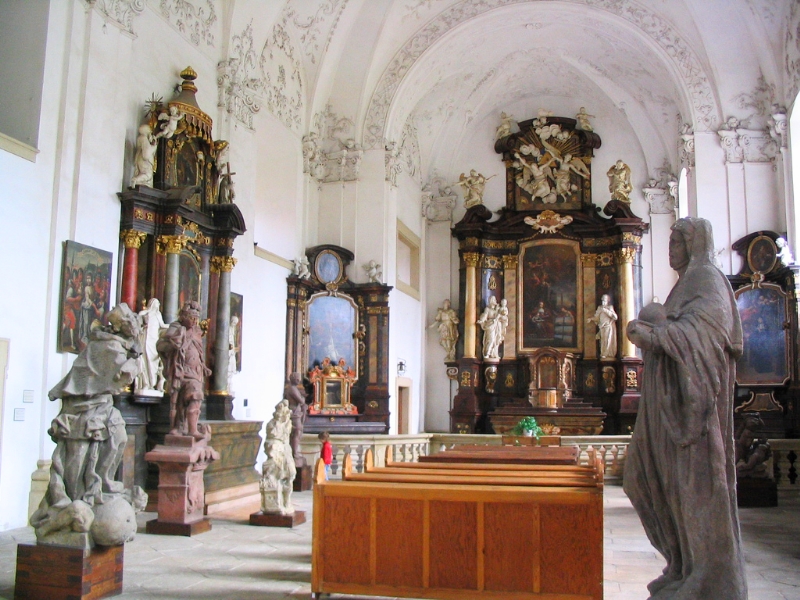
Photo: centipede on Flickr.
Here, you can see a niche below a marble gravestone from 1934 that became the last resting place of Albrecht von Wallenstein, his first wife Lukrécie Nekšovna from Landek, and a little son from Wallenstein’s second marriage with Isabela of Harrach, Karel Albrecht, who lived only to be several months old.
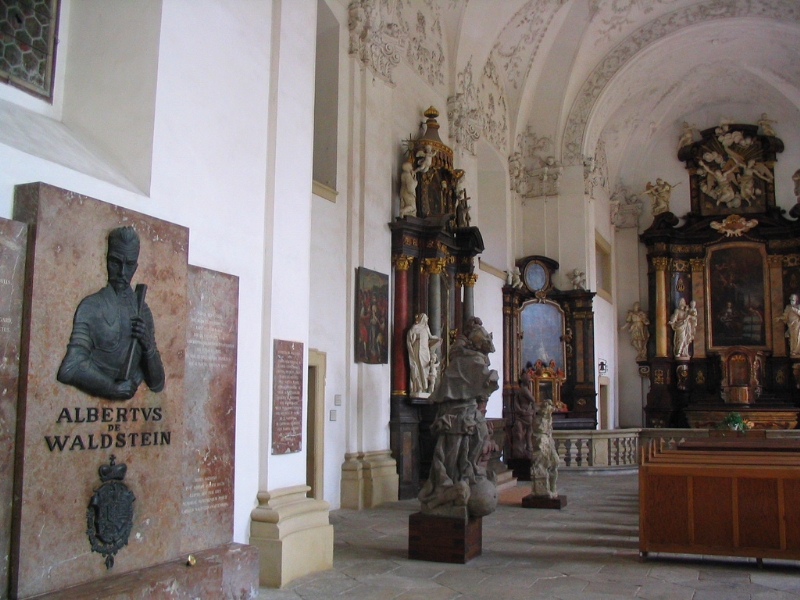
Photo: centipide on Flickr.
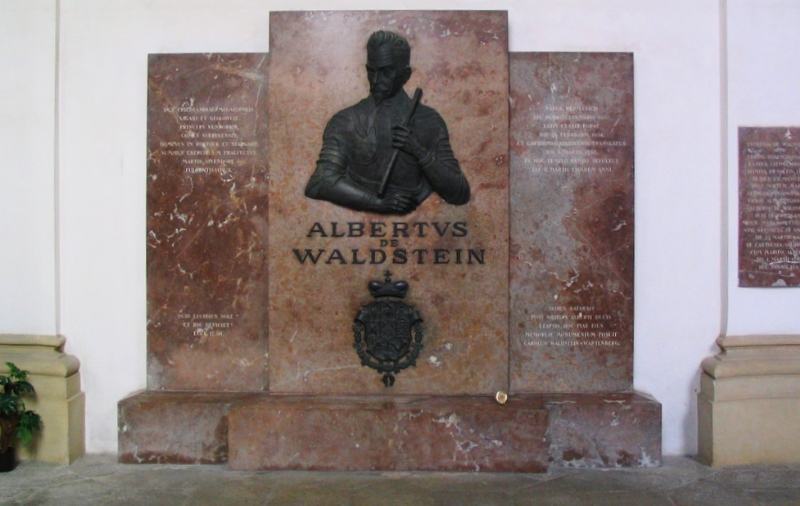
Photo: centipede on Flickr.
The Château Theater
Inside the château, a spacious dance hall was constructed in the southern corners of both the first and second floors. The dance hall was adapted into a theatre in the second half of the 18th century at the time of Vincenc of Valdštejn. The family archive of the Valdštejns, in a file of bills of Count Vincenc of Valdštejn, contains the expenses for the opera, ‘comedy’, and an orchestra from the years 1784-85. The look of the theatre at the time is only testified to by the fact that it was lined with brick. Only the remains of the decoration equipment have been preserved from the original château theatre.
While the theatre was first mentioned in archival documents during 1798, it was renovated and given an Empire-style appearance in the early 1800s on the occasion of the Holy Alliance negotiations, when Austrian Emperor Franz I, Russian Tsar Nicholas I and Prussian Crown Prince Frederick William discussed how to handle the revolts taking place throughout their lands, during 1833.
The first play performed here was Carlo Osvaldo Goldoni’s The Servant of Two Masters, performed in German and Czech by actors who came from Prague. Three theatre groups from Prague’s Theatre of the Estates gave performances here for three nights.
In the second half of the 19th century, the theatre fell into disrepair and was used as a furniture warehouse. It was not open to the public until 1999. The curtain was restored in 2001.
There is a complete English transcript of the entire video here.
Until 1918, Mnichovo Hradiště was part of the Austrian monarchy (Austria side after the compromise of 1867), in the district with the same name, one of the 94 Austrian local governments in Bohemia.
In this video, you can watch the city celebrate the 150th anniversary of the Austro-Prussian War with a complete reenactment of the battle and even a stylish vintage fashion show.
Sources: Mnichovo Hradiště, Wikipedia, Mlada Boleslav, Tracy, Mapio, Flickr, Nadovcu, Albrecht z Valdstejna.
Special thanks to Petr and Adelka, for keeping me posted and sharing their lovely photos.
You’ll want to see this before you go.
* * * * *
* * * * *
Thank you in advance for your support…
You could spend hours, days, weeks, and months finding some of this information. On this website, we curate the best of what we find for you and place it easily and conveniently into one place. Please take a moment today to recognize our efforts and make a donation towards the operational costs of this site – your support keeps the site alive and keeps us searching for the best of our heritage to bring to you.
Remember, we rely solely on your donations to keep the project going.
We appreciate you more than you know!
If you have not already subscribed to get TresBohemes.com delivered to your inbox, please use the form below now so you never miss another post.





